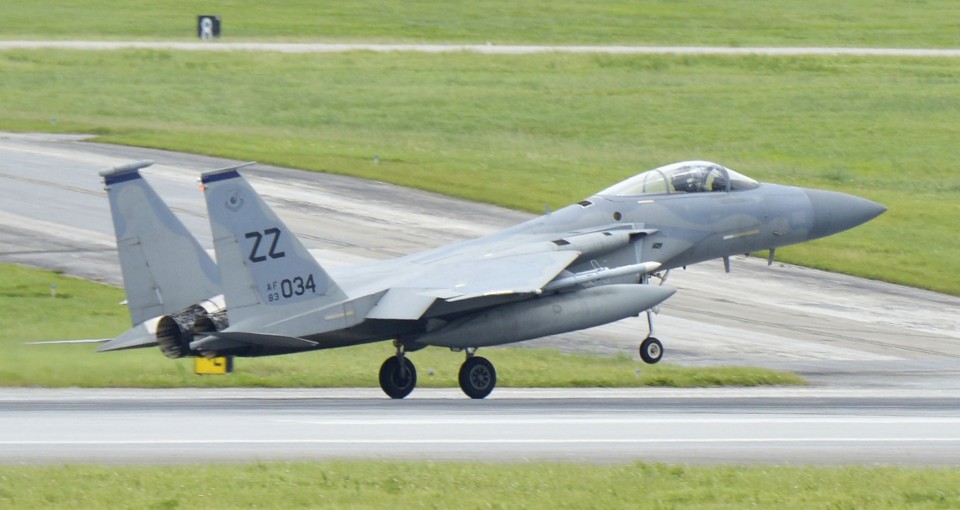
The details were given in a 1st December U.S. Air Force media release, to announce the 18th Wing bid farewell to several F-15 Eagles from Kadena Air Base, Japan. This marks the first departure of Eagles as a part of their phased withdrawal from Kadena.
The jets will travel to Kingsley Field Air National Guard Base, Oregon. From there, some will continue service at various ANG units across the U.S. while others will go to the 309th Aerospace Maintenance and Regeneration Group for storage.
As part of its modernization plan, the U.S. Air Force is retiring the aging fleet of F-15C/D Eagle aircraft that have been in service for more than four decades. The Department of Defense will continue to maintain a steady-state fighter presence at Kadena by temporarily deploying newer and more advanced aircraft to backfill the F-15s as they retrograde to the U.S.
“This is the beginning of a significant journey for the 18th Wing,” said Brig. Gen. David S. Eaglin, 18th Wing commander. “This is going to take us from where we are today to a better place in the future where we will have modernized fighters here at Kadena to better protect our allies and ensure a free and open Indo-Pacific.”
The 18th Wing, originally known as the 18th Tactical Fighter Wing, received its first F-15C on Sept. 29, 1979. The 67th Tactical Fighter Squadron, “The Fighting Cocks”, was the first squadron to become fully operational with the Eagle within the Pacific Air Forces.
Since then, the F-15C/D has ensured air superiority for the U.S. and its allies across the Indo-Pacific Command area of responsibility, while also supporting multiple deployments within the U.S. Central Command area of responsibility.
As the U.S. Air Force focuses on the modernization of its technology, the need to accelerate change is essential to control and exploit the air domain in an increasingly challenging strategic environment.
According to 18th Wing leadership, the departure of this first batch of Eagles marks a poignant but necessary step in ensuring Team Kadena remains poised to defend Japan and maintain regional stability.
“While I’m sad to see the F-15 go, it’s important to maintain an advanced fighter presence here in Okinawa,” Eaglin said. “Our adversaries have advanced and progressed since 1979 and we must do the same. I look forward to the future as we work through the challenges of divesting an airframe that served admirably as we modernize our defenses and evolve to the threats we face today.”
When the last Eagle leaves Kadena, it will have marked more than 40 years of continuous service while stationed on Okinawa. Eaglin credits the venerable fighter and the men and women who kept it flying for a sterling legacy of air superiority.
“I think the peace and stability of the region is one of the greatest accomplishments of the F-15 here, and the men and women who fly, maintain and support them are what made that happen,” said Eaglin. “With an unmatched record of 104 kills to zero losses in air-to-air combat since it’s been here, we’ve had a long history of deterrence and reassurance by our presence, which will endure as we modernize.”
Source: USAF, Defence Blog

